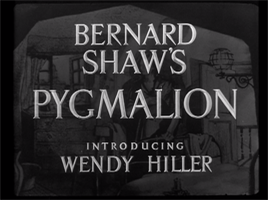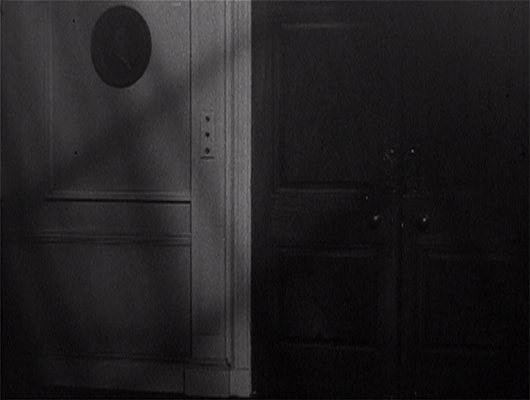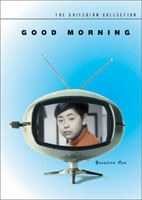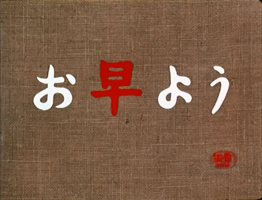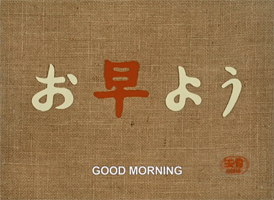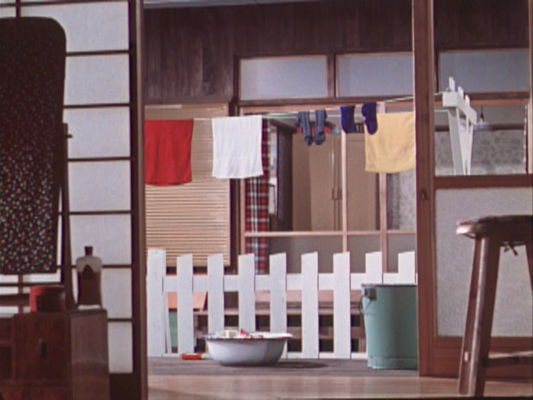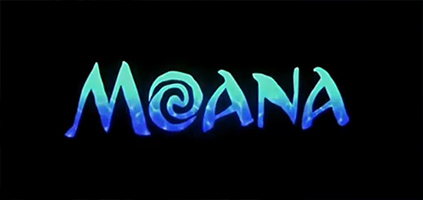
[The waitress pours sparkling water.]
BROOM Thank you.
ADAM Thank you. Could I get some ice too, please?
WAITRESS Sure!
ADAM Thanks.
[She goes.]
BROOM First let me think about what I’m gonna order so I don’t have to think about it later. What kind of thing are you gonna get?
BETH I’m gonna get the mushroom toast to share, and then the Mediterranean salad.
BROOM I think I have to get one of these expensive meals, because I haven’t really had a full meal yet today.
BETH Go ahead. I’ve eaten a lot today.
BROOM I’ll just get the brick chicken.
[The waitress returns with ice.]
ADAM Thanks a lot.
WAITRESS Any questions about the menu? So far?
BETH I think we’re actually ready.
WAITRESS You’ve seen it before! Okay!
BETH Yeah…
WAITRESS You can go ahead.
BETH Okay… I’ll start with the mushroom toast.
WAITRESS Mm-hm!
BETH And have the Mediterranean salad.
WAITRESS Okay! Not with the chicken or whatever but just the Mediterranean salad.
BETH Just the salad. Thanks.
WAITRESS Okay. And you sir?
ADAM The orecchiette [orəˈkɛtə] pasta please.
WAITRESS Orecchiette [orəˈtʃɛttiː]!
BROOM I’ll have the Tuscan chicken.
WAITRESS And the chicken. Okay.
BETH Could I also have a glass of Côtes du Rhône?
WAITRESS Sure! Gentlemen, anything else to drink right now?
BROOM Just the water for me.
WAITRESS Okay.
BROOM Thank you.
WAITRESS Sure!
[She goes.]
BROOM Rest assured we’ll all be reading the orders in the transcript.
ADAM Maybe this is just resonating with my emotional state lately, but: this movie felt in a lot of ways like a pastiche of many other Disney movies, but the longing for the world to be fixable — and specifically ecologically fixable — is what stood out most strongly to me as emotionally different from the pattern. Although I guess it was true of Brother Bear, too.
BETH This was much better than Brother Bear.
ADAM It was.
BROOM If Brother Bear didn’t inspire those feelings, then they didn’t apply.
ADAM Yeah. It made me feel really wistful and upset. But then I’ve been thinking about this a lot. Again, perhaps because of the election.
BROOM I didn’t think I was going to talk about that — it didn’t really rise to the level of being conscious — but I realize in retrospect I did have thoughts like “Is the ocean really still this pretty, or is it gross now? Will it ever be beautiful again?” And actually at one point I thought “Probably if I were in the middle of the Pacific ocean, it would be beautiful and pristine, and my images of ecological disaster ruining the earth are all just from words in the newspaper. The reality would be better.” When she broke the coral I had a fleeting thought about how the Great Barrier Reef is being destroyed by the millions of acres, and then, “but if I were there it would still look like beautiful nature, and that scale of destruction would actually be less acutely frightening to me.” Everything is more terrifying as a sentence than as a physical reality.
[The waitress brings cutlery.]
BETH Thank you.
[She goes.]
BETH When it’s a sentence, like…?
BROOM You know, “The Great Barrier Reef is dying. The corals are dying after thousands of years.” I don’t have much more to say about that. Only when you said it did I realize I had thought about it during the movie.
BETH I wasn’t really thinking about it in those terms either.
ADAM Maybe everyone should say what struck them the most and then we can launch off from there.
BETH The thing that struck me the most was that this occasionally gave me this feeling —
[The waitress brings and pours the wine]
BETH Thank you.
WAITRESS Cheers!
[She goes.]
BETH … that only Disney has given me. I’ve felt this feeling and it’s hard to describe, but it’s in Disney World in certain rides, and it’s in older Disney cartoons. The time I felt it here was during the “Shiny” song, when everything was neon.
BROOM Black light.
BETH Yeah. It’s a kind of feeling that reaches into me and delights me in a way that nothing else ever has. And it’s very particular to Disney. That’s the thing that stuck with me the most. I thought the movie was a little long. I thought it lagged a little bit a couple times.
BROOM How long was it?
ADAM An hour forty-five.
BROOM That’s pretty long for a Disney movie.
BETH But overall I thought it was more imaginative than many of them, and let itself be free with its animation in ways that felt new to me.
[A waiter appears with the mushroom toast.]
WAITER Hello how are you. Mushroom toast?
BETH Great.
[He sets it down.]
WAITER Enjoy.
[He goes.]
BETH You guys can share this.
BROOM I felt like on a sensory level it was very rewarding, but I felt the basic conceit — that they were taking elemental myth and applying a modern journey-of-self psychological story over it — just didn’t make any emotional sense. I was sleepy so I was watching it through childlike eyes, just asking “what journey are you taking me on?” A kid is gonna watch this happily enough because it’s so tactile, but… All the gestures about character worked, they were delivered with expertise, but they didn’t work for this movie’s story. There was no there there. I felt unengaged.
BETH You want some mushroom toast?
ADAM No thanks.
BETH You want any?
BROOM Yeah.
ADAM There was definitely a lot of “the true journey is within” psychology. I’m trying to remember in recent movies… Obviously, whats-her-name…
BROOM Rapunzel?
ADAM No, the rabbit from Zootopia.
BROOM Judy Hopps.
ADAM Judy Hopps, thank you. Judy Hopps has to discover her inner reserves of courage, but it wasn’t quite so overt. Or in Frozen, or in Tangled — a lot of the recent ones — this one was more explicit about it. But I feel like those are sort of connected, in my mind: the fact that they were going to dive deep into the mythologies of another culture is tied to the impulse to be psychologically sensitive. So they at least strike me as thematically connected.
BROOM You’re saying that having all those cultural advisers is the same kind of sensitivity as being sensitive to whether a person is being herself, which is what the story is about?
ADAM Yeah, they’re both things that [conservative roommate] would have disapproved of, in college.
BROOM They’re both for snowflakes.
ADAM Yeah, I guess. So to me they seem harmonious thematically in that way. Although I agree with you that that has nothing to do with the underpinnings of the real mythology.
BROOM I spent most of the time thinking about myth. If someone gave me a book of Hawaiian and Polynesian Mythology, which I assume is the main source for this stuff, I would find it esoteric and kind of dry, even though the stories were about fire and water and gods, because it’s not my cosmology. It would take a lot of imaginative work to plug into what makes a myth powerful to the people whose myth it is. And I just thought, “that’s a worthwhile creative project, to make that stuff come alive for the general audience,” and that’s just not the project they took on. They pulled stuff from that mythology book just so they could do another Little Mermaid musical.
BETH Do you think that’s what they felt that they took on, though?
BROOM No, not directly. I don’t think they thought “let’s tell this story as it is.” I think they thought “let’s use this story.”
BETH Or “let’s evolve it.”
BROOM Or “let’s tell this story our way.” They would probably say, “We made it relevant. We made it modern.”
ADAM Presumably in the real mythology Maui is not, like, kind of a jerk who gets humanized by a little girl in the course of their seafaring journeys together. So yes.
BROOM “Prometheus, why are you so sad? You took the fire, man, you’re awesome! Why are you so down on yourself?”
ADAM Isn’t that exactly what Hercules was?
BROOM Yeah. So this is the same directors as Hercules, which was like a straight-up comedy, riffing on Greek myth. Because everyone knows those myths, so they could make the whole thing be in quotes. It was like Into the Woods: you already know the story of Little Red Riding Hood so we can joke about it. But no-one knows this story. I mean, I didn’t even know Maui was a god. I knew Maui was an island, but I didn’t know he was a demigod.
ADAM He’s “just an ordinary demi-guy.”
BROOM Yeah. I’m not sure that means what they wanted it to mean, but yes. Anyway, maybe also because I was sleepy, in my head I started trying to do the real project of bringing these big mythological feelings to life. This huge green goddess is responsible for life and joy and the ocean… How would you tell that, in a way that didn’t sideline it to a story that was actually all about coming of age and getting over your parents’ issues with themselves. Maybe I shouldn’t have been thinking about any of that.
BETH I didn’t watch it like that at all. I always just revert to kid mode when I watch these.
BROOM And the kid enjoyed this.
BETH For the most part. The kid got bored a little bit.
BROOM So that’s another way of saying what I’m saying. At the beginning, when they say “You need to practice governing. What should we do?”
BETH “She’s doing great!”
BROOM I thought, kid me does not know what’s going on: “They’re on this island, walking around talking. Clearly this is more boring than the magic ocean, so I guess the significance of this is ‘thing that’s too boring.'” Which is correct. But there was a lot of it to sit through.
ADAM But is that any different from Belle’s walk through the village? Obviously, rebelling against the thing everyone expects you to do is the ur- Disney plot, though I was having trouble remembering all of them as I was sitting there. I guess all Ariel has to do is go to mermaid school, right? She’s disobedient by exploring human artifacts, but she’s not disobedient by being —
BROOM It’s exactly the same: she’s not supposed to go beyond the border.
ADAM Right, but they didn’t get into quite so much detail about what her real responsibilities were, right?
BROOM She was supposed to be a royal darling. She was supposed to be at that concert and sing “ah-ha-ha-ha-ha-ha!”
ADAM And Simba doesn’t really have any governing responsibilities either.
BROOM Well, he does by the end. He’s going to.
ADAM But they don’t get into the substance.
BETH He doesn’t practice.
BROOM They don’t show the day to day, they don’t show him signing and vetoing, but they show the landscape and say that this is his domain, and I think James Earl Jones says something about how they keep peace among the different species by their firm rule. Something like that.
ADAM Well, I appreciated that it felt like more than that. It wasn’t just boring formalities. She was actually abdicating responsibilities — until it turned out that it required her to do the thing that she wanted to do anyway. But before that, when she was just disobediently going out into the ocean, she had a real job to be doing.
BROOM Yeah… sort of. It wasn’t clear. It was still “practice.”
ADAM She’s gonna be the chief. She has to get ready. So, I have a confession. I wasn’t going to tell you this: I did actually see this with my nephews already, in November.
BETH That’s hilarious.
ADAM Because I had to. Everyone made me. I was like, “I can’t because I have to see it later,” but then they made me. So I saw this before.
BROOM What was the point of not confessing until now? You just thought I’d be angrier about it if you hadn’t already done your duty?
ADAM Wait, what?
BROOM What was the point of not confessing it but then confessing it?
ADAM Because it relates to a point I’m gonna make! It’s in service of this discussion. At first I thought, “well, it’s not relevant, so I can gloss over it.” But it did feel different on two viewings.
BROOM Wait, when did you see it?
ADAM Thanksgiving, with my nephews.
BROOM Did you see it before or after texting me to say “we have to see Moana when I get back.”
ADAM I don’t remember. Probably I was texting you because I was trying to fight off my family and show them that we couldn’t go it see it. But then the only alternative was to see Sing, which was so execrable that… anyway.
BROOM It’s fine. Go ahead, tell me about your nephews’ response.
ADAM No no, it’s about my response. The first time I saw it, it had a much more dreamlike coherence, and I was really taken with the flow of it. But watching it the second time, when I knew what was gonna happen, it felt a lot more chunked into discrete incidents that didn’t really necessarily have any driving story rationale.
BROOM For example: remember the part when they fought with coconuts for 8 minutes?
ADAM Right, exactly.
BETH I did enjoy that part, though.
ADAM Yeah, it was entertaining! And it shows that she has pluck and determination. But, yeah, this time it felt more like it had business in the middle of it just for its own sake.
BROOM Level 1: The island. Level 2: Getting past the reef. Level 3: Coconut fight. Level 4: Land of the monsters.
ADAM Probably not coincidentally, it reminded me a lot more of “Monkey Island” this time than the first time.
BETH It reminded me of “Donkey Kong Country.”
BROOM Yeah, it was very much like “Donkey Kong Country Returns.” It reminded me of video games in its look, its feel, its thought patterns, its rhythms. Everything.
ADAM But the other thing was that [nephew 1] and [nephew 2] were engrossed in it, and were also quite upset in the middle. I mean, [nephew 2] was quite upset! During the crab, and when the grandmother dies. He was really into it. I think he might have started talking back to the screen in the middle of it.
BETH That’s cute.
ADAM So they seemed to like it.
[A waiter comes with the entrées. He sets down the first one.]
BETH Thank you.
[He begins to set down the second one.]
BROOM That’s for him.
ADAM That’s for me, thanks.
[He sets down the second one.]
WAITER Chicken?
[He sets down the third one.]
BROOM Thank you very much.
WAITER You’re welcome; enjoy.
[He goes.]
ADAM So my estimation of it went down a little bit. But the psychology aspects of it are the things that do feel organic, at least to the story they’re trying to tell, as opposed to just being business. So maybe that’s why I’m more sympathetic to that aspect of it.
BROOM What do you mean, “it feels organic to the story they’re trying to tell”?
ADAM Well, isn’t there something at least slightly touching about the fact that at the end, the way they defeat evil isn’t through some swirl of Ursula going down in a whirlpool, but that she has the courage to stand there and let it come towards her? That’s much more impressive than, like, “he aims a shot and it hits her right in the eye! AAAARGH! I’m melting, I’m melting!”
BETH I thought it was very much like that Beyoncé video, when she’s walking and her hair’s flowing. When she’s approaching the goddess or whatever.
BROOM Lava monster.
BETH The lava monster. It felt like it was taken from a piece of culture that we don’t usually see in Disney.
BROOM I.e. Beyoncé.
BETH Uh-huh.
ADAM And having hip-hoppy songs. And frankly, having that crab song, which was weird, for a Disney movie.
BROOM Why? What about it was weird?
ADAM It’s just that it’s not the Broadway register that you expect.
BROOM You know who these songs were by!
ADAM Yes, yes, well that’s what I’m segueing to, here.
BETH I thought the songs — which were by Lin-Manuel Miranda — had a better flow and were more interesting than usual.
ADAM Yeah, they were sort of jazzy, they had syncopation, and they had pretty good lyrics. I liked the line “You can’t expect a demigod to beat a decapod.” That made me laugh. I guess BROOM didn’t like that line.
BROOM You know what you left out.
ADAM No.
BROOM “You can’t expect a demigod to beat a decapod — look it up.”
ADAM Okay, that’s not as good.
BROOM Well, that’s what it really was. Also, what makes it a decapod? I don’t understand.
ADAM I don’t know.
BROOM I’ve gotta look it up.
BETH Can I have a small piece of that chicken?
BROOM You can have as much of this as you want.
BETH Just cut off a little edge.
ADAM I thought the “perfect daughter” song was really good and sort of jazzy.
BETH I thought “You’re Welcome” was good.
ADAM Yeah, I liked that song. I liked the big Disney, you know, “and then I’ll know how far I’ll go” song. Not as good as “Let It Go,” which is basically the exact same song, but.
BROOM Is that what the words were?
ADAM [sings:] “And no-one knows… how far it go-oes,” meaning the horizon. But then she also finds out how far she’ll go.
BROOM But that was the refrain? Wasn’t “know who I am” a lyric? No?
BETH I think ADAM is right. But essentially that’s the same thing.
BROOM All right. Well, I thought —
[The waitress appears]
WAITRESS How was everything prepared? Good?
BROOM Very nice.
ADAM Thank you.
[She goes]
BROOM This is all going in. Because it feels like there’s strangely a lot of it.
ADAM It always goes in!
BROOM It’s my favorite part, in some ways. I thought that the songs were in a certain sense weak. And that sense is, I think, a weakness for Lin-Manuel that Hamilton in a way disguises, because of the way Hamilton works — that he’s not much for “show don’t tell.” He mostly just tells you, in so many words, like, [sings:] “I gotta lotta conflict / Inside me / Sometimes I think I’m great / Sometimes I don’t.” And just says it. This opening song was like [sings:] “We live on this island / And it’s great / We have a lot of culture / We love each other / We don’t need anything else.” Instead of being about the sun, or the grass, or whatever. Except for when it’s “time for an image!”
ADAM Well, “the coconuts” and “the taro root”…
BROOM Yes, but he didn’t use those as the story of the song, he used those as, like, “Exhibit A” toward his thesis statement, which was completely on the nose.
ADAM What’s an example of a Broadway song that does what you’re calling for, here? Just so I understand. I mean, don’t all Broadway songs work that way?
BROOM Well, the first song in Oklahoma: “Oh what a beautiful mornin’ / Oh what a beautiful day / I got a wonderful feelin’ / Everything’s goin’ my way.” Then he describes the meadow and so on. So: is the point of that song to establish that it’s a beautiful morning? No. That’s what he’s talking about, but the point is to establish a mood, and this character, and sympathy for the character. The fact that it’s a beautiful morning and he feels good is actually to the side of what the song is doing for the audience. In a Lin-Manuel song, if someone says it’s a beautiful morning, it’s because he thought, “for the plot, the audience needs to know that this is morning is very beautiful.” He would have written for Curly to walk out and sing, like [sings:] “Livin’ on a farm / Works for me! / I never lose sight / Of what I got comin’ to me!”
BETH That was a good impromptu alternate Oklahoma.
BROOM So, yes: every song every written says something “in so many words.” But if you pick the thing that is the dramaturgical function of the song to be the thing that the song is saying, you’re missing the opportunity to do so much more.
BETH Yeah. I guess that’s why this didn’t feel like art to me. I was just thinking about the best Disney movies, like Dumbo, or Pinocchio, the older ones, and how they felt greater than what’s on the screen. And this just felt like a well-executed thing on a screen.
BROOM Right. I actually had the thought: if you took out all of the explaining of the story, the art direction is so good that the under-layer, the dream layer, would work by itself. So they should have taken it out!
ADAM So a song like “You’re Welcome,” which gives you a lot of plot background about Maui, but also has the humorous function of distracting her from the fact that he’s putting her in a cave. Does that have the flaws that you’re describing? I’m just trying to understand.
BROOM No, not really. That’s a functional song. But during that song I was thinking: did he really create the sun and the wind? Then of course, yes, “you’re welcome.” There’s no sarcasm there. He’s a cosmic force! Why would we laugh at that?
BETH I was thinking, if he did those things he’d be more than a “demigod.”
BROOM That’s why myth is such a weird thing to treat this way. He lifted the islands out of the sea? Then it’s not actually braggadocious, so to speak, for him to say “you’re welcome.”
ADAM But he did it because he had a void in his heart. That, I thought, was the weakest scene in the whole movie. When she sees that tattoo and says, “You just have to believe in yourself.” And then he can suddenly do his magic again.
BROOM I liked that the tattoo was revealed quickly in the crab song. And we pick it up, because the crab says what it is, if we’re listening fast enough. But then we got to the scene where we had to listen slow to the same thing. I thought, “of course, they had to make it lamer.” The crab sings something like “People didn’t want you / You’re trying to compensate for it.” Then we have to watch this other scene where he says [slo-mo:] “Peeeooople diiidn’t waaant meeee… Iii’m tryyyiiing to cooompeeensaaate…”
ADAM I guess all that is is the magic feather done over again. Well, actually, it’s a lot weaker than the magic feather, because the whole point of the magic feather is that… Well, I don’t know. Maui does have a magic fishhook.
BETH I thought that we were gonna learn that actually he didn’t need it.
BROOM At the end, when the fishhook breaks, and he says, “Well, I’m still Maui!” I know that that’s what they set up to be the arc, but it functionally isn’t. He’s defined by being a magical god who does god things, and now he can’t anymore. What’s he gonna do? They don’t answer it. It was bizarre.
ADAM I was surprised that Heihei was by far the weakest sidekick. I guess that’s obviously intentional.
BROOM It seemed like a satire on sidekicks.
BETH I actually thought they had put him in as a joke for themselves.
ADAM But what a strange joke. I assumed they put him in to be like Wilson the volleyball, because otherwise it’s terrifying and insane that she’s on a boat by herself in the middle of the Pacific Ocean. But couldn’t he have done anything? I mean, he saved the jewel once, but the jewel drops in the ocean like twenty times! The ocean could have just saved it.
BETH Yeah, the ocean was kind of finicky.
BROOM The ocean will do anything…
ADAM Except when it won’t.
BROOM … right, except when she’s gotta do it herself. But if anything goes wrong, don’t worry, the ocean will take care of it. She doesn’t row all the way to the island at the end, so the ocean pushes her the rest of the way.
ADAM Yeah, or she’s knocked unconscious in a storm and luckily she washes up exactly where she needs to be. Whew!
BROOM That’s what’s weird about doing myth in this way. At the beginning of Mimesis, Auerbach talks about the flat, unpsychological style.
ADAM The world of Greek mythology.
BROOM Right, the style of the Odyssey. Everything is flat, there’s no background, and that this is a certain mode of storytelling.
ADAM Which is just the opposite of having psychological backstory, and trying to spend the whole movie explaining explaining why people do the things they do, and where they find the wellsprings of inner strength to do them.
BROOM Right. Part of the power of those kinds of stories is that your subconscious has to fill that in. And here they say essentially “don’t worry about figuring it out; we figured it out for you. Trust us: it’s exactly the same as The Little Mermaid, so this’ll be easy.”
ADAM I still did really like it though. I found it very entertaining. It’s so beautiful, and it’s so — it feels like it’s handling its material with sensitivity and grace. And I liked the ending. And I liked — I thought they finally got the gender politics sort of effortlessly right.
BROOM Close to effortlessly. The effort shows, but.
ADAM Well, it’s all part of a long history of trying harder and harder, but, like, finally they believably got there, I thought.
BROOM But when Maui does the bit about “Hero to all men — and women! To everyone: to all!” That seemed like self-satire too. It was like they were saying, “You remember how hard we used to have to work at this! Ha ha but we’re way past that, now!”
ADAM It is a little weird when he gives her the speech about “I put a stone, as did my father, and my father’s father, and all…” Whoa.
BETH “Now you.”
ADAM “Now you, and your stone is a seashell,” which isn’t really —
[The waitress appears]
WAITRESS Do you want another bottle of water, or are we switching over to tap?
BETH Let’s switch.
WAITRESS That’s fine!
ADAM Thanks.
WAITRESS Okay, here, you can take the rest of this first since you have some in here. Here you go!
[She pours the remaining water from the bottle into ADAM‘s glass]
ADAM Thanks.
[The waitress goes]
ADAM Glad you guys didn’t want any! Right: the seashell is not actually an appropriate thing to put on the mound, because you can’t put another thing on top of the seashell, Moana!
BETH Crushing it, you can!
ADAM Why do they need to go wayfinding to the other island at the end, even though they’ve already saved their island?
BROOM Are they saying “wayfinding” or “wavefinding”?
BETH Way. With a Y.
BROOM It’s just the actual word “wayfinding.”
BETH Mm-hm.
ADAM Yeah.
BROOM I thought that at first, and then I thought, “oh, no, they’re saying ‘wavefinding,’ they made this thing up to sound magical.”
BETH I thought it was because they’re explorers.
ADAM Oh, just as a hobby?
BETH Yeah, this is what they do now because she’s restored their voyager nature.
ADAM Well, obviously that’s true, but that doesn’t make any sense. But you’re obviously correct.
BROOM Here’s what I wanna know: how did Disney Animation Studios allow this and Lava to be in production at the same time?
ADAM Right. Lava You.
BROOM I think the name of the movie was just Lava but “I Lava You” was the refrain.
ADAM I did think about that as I was watching this.
BETH I had forgotten about that.
BROOM Like, when the goddess lies down and becomes the island, that was exactly the imagery from Lava.
ADAM Maybe that’s where they got the idea for this movie.
BROOM Or vice versa. What’d you guys think of the short, which I can’t remember the name of. Possibly “Paul,” or “Internal Anatomy,” or something like that. [ed.: Inner Workings]
BETH I thought it was good. I was fine with it.
ADAM It was fine.
BETH I liked that… in the middle when he was goofing off and satisfying his desires, I thought, like, “this isn’t a solution. You can’t just run away.” I liked that they had him go back to his job and be happy and then spread the happiness to everyone there.
BROOM I liked that too.
ADAM Yeah, I agree. At first I thought they were just gonna have him quit his job.
BROOM Throw the cell phone in the snow.
ADAM Yeah. Right, thank you. Another movie that I’m surprised has lasted.
BROOM It didn’t last. Nobody likes that movie.
ADAM Yeah, but I still think about it sometimes. “Bracket, ed, colon, Hook, close bracket.” I was putting in your editor’s note. Or you could do it with a hyperlink.
[minor digression about Hook ensues]
ADAM The short: maybe I resented it a little because I’m a corporate lawyer.
BROOM Does that consist of a lot of this? [makes single-finger key-tapping gesture from the short]
ADAM In a larger sense? I don’t know. Does happiness consist of buying sunglasses from the sunglasses girl, and then marrying her?
BETH Maybe!
BROOM Did he marry her?
BETH Yeah, they had two kids.
ADAM In the closing credits.
BETH One looked like her and one looked like him.
BROOM I was kinda distracted during that because the people behind us were unwrapping something really noisily.
ADAM At least they weren’t the girls in front of us, who had the largest hair of anyone who’s never been to a movie before.
BROOM When you sat down, you said “I don’t want to sit in that other seat because there’s a guy in front of me.” And then the muppet with the giant hair came and sat in front of you. Or with a giant hat, right?
BETH The muppet has a hat, yes.
ADAM Why do you think Pua didn’t get to be the sidekick?
BROOM That also seemed like deliberate internal commentary about sidekicks. They set up the pig as the legitimate sidekick — I think that was supposed to be the joke for the savvy audience. “Here’s the likely sidekick, and here’s the garbage sidekick,” and —
[The waitress appears]
WAITRESS These guys are — Did you want me to wrap it up for you or are you still working on it?
ADAM Yeah, you can wrap it. Thank you.
WAITRESS Okay! My friend Edward’s gonna finish you all out. I’m gonna set out along my way.
BETH Oh.
ADAM All right. Thanks very much.
BETH Thank you.
[She goes. Edward clears the plates while we wait.]
BROOM Thank you.
[Edward continues clearing plates.]
ADAM Thanks.
[Edward continues clearing plates. He goes.]
BROOM I genuinely don’t remember what I was saying.
ADAM You were saying that it was a joke about sidekicks.
BROOM Yeah. You know what I was saying. That they deliberately picked the bad one.
BETH Can you just note how many seconds went by during that?
BROOM Yes.
[ed.: 40 seconds from ‘The waitress appears’ to ‘I genuinely don’t remember what I was saying.’]
ADAM What else struck me about this? Um…
BROOM It looked like they were all dolls made of nice soft plastic.
ADAM But they took trouble to show his skin, underneath the tattoo animation, in a way that was believable and appealing.
BETH Yeah.
BROOM The tattoos seemed like a big scheme to keep the traditional animation department alive.
ADAM Was that hand-drawn?
BROOM Yeah, in the credits it said, “hand-drawn animation directed by…”
BETH Hey, whatever! I thought it was cool.
BROOM I agree.
ADAM I liked the grandmother.
BROOM I liked the grandmother too.
BETH I did too. I thought she was a good character.
ADAM I thought she was an appealing mix of comic and wise.
BROOM She was very grandmotherly.
ADAM I liked that she died. That’s a useful thing to teach kids about: that your grandparents will die.
BROOM I thought, “whoa!” when that wave of death comes down the mountainside when she dies. That got to me.
BETH But then she turned into the stingray!
ADAM It was just the wave of her soul force, coming down the mountain.
BROOM But it looked sort of gray in the moment of death. The light went out in the house.
BETH Yeah, all the lights went out —
[The waitress appears with ADAM‘s wrapped leftovers.]
ADAM Thank you.
WAITRESS Mm-hm, thank you very much, sir.
BROOM Have a good night.
[She goes.]
ADAM Are there any other world cultures that have yet to be mined to make a Disney movie? Remember that Big Hero 6 happened?
BETH Eskimos?
BROOM That’s what I just thought of too!
ADAM Eskimos?
BROOM Yeah! They haven’t done one yet. Simple.
ADAM I guess.
BROOM They’ve done two Hawaiian ones, now!
ADAM It’s true. Although this was really more French Polynesia.
BETH Yeah, it felt more Polynesian.
BROOM Is Maui a god beyond Hawaii?
ADAM I don’t know. It just felt more Polynesian generally.
BROOM I also assumed it was in Polynesia, but then when they talked about Maui, I thought, well, that’s what Maui is named after, so.
BETH Well, they had a Hawaii department as well as a Fiji department…
ADAM They’ve never done one in India. Although I guess The Jungle Book is set in India, sort of. I guess more than “sort of.”
BROOM And Mulan is set in China. Have they done one in Japan?
ADAM Well, Big Hero 6, sort of.
BROOM That was in Nouveau Tokyo, or whatever it was called.
ADAM San Fransokyo, I think.
BROOM Has there been a Russian one? There was that faux-Disney Anastasia in the 90s, but I don’t think Disney has done a Russian one. In this new era of glorious detente there will surely be one.
ADAM Although all the fairy tale ones could be in Russia.
BROOM Trust me: the next Disney movie? It’s gonna be Russian. No, none of those fairy tales take place in Russia! The backgrounds are…
BETH They’re Danish.
ADAM There’s no “Peter and the Wolf” thing that they did?
BROOM Is there an Italian one?
BETH and ADAM Pinocchio.
BROOM Oh right. It’s true that it’s Italian. But it’s not very Italian.
BETH French?
BROOM La Belle et la Bête. What about our other European friends? What about Poland? What about Denmark?
ADAM The Little Mermaid at least presumably is set in Denmark. And Frozen is set in, like, pan-Scandinavia.
BETH Australia? Oh, wait, right…
BROOM The Rescuers Down Under.
BETH Of course. Excuse me!
ADAM Is there one set in Germany? Oh, Hunchback of Notre Dame is also set in France.
BETH I don’t think there’s a German one.
ADAM Except insofar as Sleeping Beauty and those others are German.
BROOM Yeah, that’s where I think Snow White takes place. In the Black Forest. Does it not?
ADAM I don’t know that you have to put all of that in.
BROOM And I think The Three Caballeros takes place in Germany.
ADAM Relatively few of them take place in the actual United States. I mean, Dumbo.
BETH Lady and the Tramp.
ADAM Brother Bear. Home on the Range.
BROOM Chicken Little.
ADAM Big Hero 6, sort of.
BETH It’s a crossover.
ADAM I suppose the original Rescuers. And what was the one that was like All Dogs Go To Heaven but wasn’t?
BROOM Oliver & Company. What about Iceland?
ADAM There’s never been a Canadian one.
BROOM Yeah, so we’ve got a northern one, an Alaskan one, or a North Pole one, that’s yet to be made. The Arctic.
ADAM Is it expressly about climate change, or only implicitly?
BROOM I don’t know; was Brother Bear about climate change?
ADAM Too soon. It was just about the environment generally.
BROOM 2003 was “too soon” to be about climate change?
ADAM I thought it was like 1998. Oh, Pocahontas was also set in the United States.
BROOM Pocahontas was sort of about ecological stewardship.
ADAM Well that’s what I was saying when I said it was a familiar Disney theme, and I was just struck more by it this time.
BROOM Bolt is also very American; they travel across the country.
BETH And the Judy Hopps one.
BROOM Zootopia took place in Zootopia.
BETH Okay, but that was America. That was future America.
BROOM Did you know that in the UK that same movie is called Zootropolis? That’s the truth.
ADAM If the Disney themes are “being discontent with where you are” and “establishing your place vis-à-vis your family,” then “environmental trauma” is certainly also one of the themes.
BROOM What do you think it would stir a person to do, if they grew up watching Moana?
ADAM Well, I felt very stirred the first time I watched it to want to save the oceans, and then I felt sad that that’s essentially impossible for a person to do. I felt a sense of deep longing and shame about that.
BETH It made me think about what it means to be chosen to do something. I was thinking about all the other kids on the island — if everyone on the island was “chosen” to do something, it wouldn’t work. There has to be this concept of special-ness.
BROOM That’s like what I said about Pygmalion. It would be better if a Disney movie said: “everyone has dreams; we just happen to be following this one person.” It’s not that the protagonist is Harry Potter, they’re “a person.” But it’s like Disney can’t get that far. Are there any of them that had that quality?
BETH Well that’s why I liked the one with the princess who opened her own business.
ADAM The Princess and the Frog. Also set in the United States.
BETH Because she was just industrious.
ADAM She wasn’t actually a princess, right?
BETH I can’t really remember.
BROOM Maybe she was the princess of the Mardi Gras parade or something and that’s how they got around it. But she was from a rich family, wasn’t she? Oh no, she wasn’t; her friend was rich and she wasn’t.
BETH It was more about deciding to do something and making it happen.
ADAM So you want to see a Disney movie about a little girl whose roommate becomes a Broadway star, and she stays and works in a cafe and is consumed with bitterness.
BETH No! And she decides, “I’m gonna do something for me. I don’t need ‘talent.’ I don’t need to be ‘chosen.'”
BROOM Well, “talent” is good. She just doesn’t need to be chosen.
ADAM She doesn’t need to be the chief’s daughter and be the one who totally changes the way of life for her people. It’s about the taro root girl. She gets married and, you know, she develops some new taro root recipes.
BETH But she can have an exceptional life too! It just doesn’t have to be magical.
BROOM These movies are emotional experiences. ADAM, you’re staying within the mindset of the movie and saying “well, if you’re not the chief’s daughter, you’re a boring nobody.”
ADAM No — everybody has a job on this island.
BROOM But what I’m saying is: the same emotional thrust of the movie — that is, “what happens to you is important” — could be delivered, because that’s how the movie is going to feel, without the movie having to say explicitly that this is happening because everybody agrees that they’re the one and only princess. They could just be “chosen” by the story.
BETH Yes.
ADAM So you think it should have been a movie about a girl who is not the chief’s daughter and it turns out at the end that she wasn’t chosen by the ocean, she just decided to do it all by herself. And the ocean was her magic feather.
BETH Yeah!
BROOM I don’t know if this movie needed to be that way, but —
BETH But I like that concept more than this idea of waiting to get the sign from above that you’re special in some way, so that you can succeed. Because I think that messes with kids.
BROOM My favorite Lin-Manuel line in this was something about “when you hear a voice whisper inside you / that is who you are” or something like that.
ADAM He only wrote half of these songs, you know. Not all of them. He’s doing an entire Disney movie now, which he was engaged to do before Hamilton became a hit.
BROOM Well, this one must have been in the works for some years. I guess he got this on the strength of In the Heights.
BETH But the credits thanked the Hamilton cast.
ADAM Probably because these guys got to go see Hamilton.
BROOM Remember when Rent was like a big, big thing?
ADAM Keenly, yes.
BROOM So in 20 years, presumably people will be saying “remember when there was all that Hamilton going on?”
ADAM But Rent now feels humiliating. To think back on the fact that I loved Rent is embarrassing. I think Hamilton will age better than Rent.
BROOM You think people are generally embarrassed about Rent, and won’t be embarrassed about Hamilton?
BETH I do.
ADAM Yeah, Rent feels super teenage, and not cool teenage.
BROOM It’s based on La bohème! He took La bohème and updated it into the vernacular! It shows that some themes are everlasting! It was so diverse!
ADAM I know! It had a lesbian couple, and a drag queen with HIV…
BROOM Yes! It’s like the vibrant youth reclaiming this important old story! You don’t think people will feel exactly the same about Hamilton in 20 years?
ADAM You mean it’s going to turn out to have been embarrassing?
[Edward appears.]
BETH We’re not gonna — we’re done, thanks.
EDWARD Coffee, tea… ?
BROOM No thanks.
BETH No thanks.
ADAM No, we’ll take the check.
BETH Thank you.
[Edward goes.]
ADAM I mean, I hope not.
BROOM “What’s your name? / My name is Alexander Hamilton…” Just think your way forward, here…
ADAM The President of The United States repeatedly attended Hamilton.
BROOM And look what’s happening to him now. [ed: 1/16/17]
ADAM Although I guess the cast of Rent did perform at the Democratic convention.
BROOM What’s the number of minutes in a year?
ADAM Five-hundred-twenty-five thousand six hundred.
[we read the New York Times review]
BROOM My Moana sum-up is: there just wasn’t a place for my heart in it. I was able to get stuff out of it because it was rich with skill and good intentions, but with Frozen, for example, it was very easy for me to get caught up emotionally, and with this it was almost impossible.
ADAM Yeah, I don’t think this will be as sticky as Frozen in my memory. Not that I remember Frozen so well, but certainly the songs are gay classics already. I don’t think these songs will endure.
BROOM I hear they’re about to open a sing-along version of this. So there are people who want to sing along with this. Or at least Disney thinks there are.
BETH Well, maybe that’s a way to perpetuate those songs.
ADAM Yeah, you’ve gotta teach them to people.
BETH I agree with your assessment, BROOM. Putting that on the record.
BROOM And yet you liked it better.
BETH I did like it better, because it had those… things in it, that really get me. It’s just about colors. I just like colors.
BROOM Yeah. Palette is the most fundamental issue in these movies.
BETH It had a really great one.
ADAM The next movie is Wreck-It Ralph 2.
BROOM Now that is not a good idea.
ADAM Release date: March 9, 2018.
BETH So more than a year.
ADAM Followed by Gigantic, inspired by Jack and the Beanstalk, release date November 21, 2018.
BETH Okay. So this was it for this year.
ADAM Followed by “TBA” and “TBA.”
BROOM I wish I had liked it more. But I’m pretty tired. I might have liked it more if I had felt better.
BETH I think so. I saw you kind of lolling.
BROOM Yeah, I let myself loll. It was in moments when the movie was specifically disappointing. I would think, “you’re going to embrace me now, right?” and then it wouldn’t. So I’d just put my head down.
[long digression reading headlines about Disney’s upcoming live-action productions and collaborations with Lin-Manuel Miranda]
ADAM Are we done recording?
BETH I think we’re done.
BROOM We can be done.
ADAM Thanks, everyone. See you in 2018.

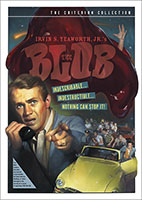 2013 Blu-ray:
2013 Blu-ray: 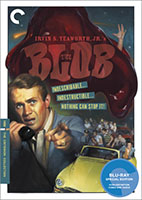
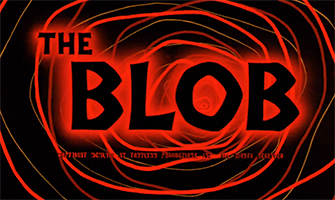
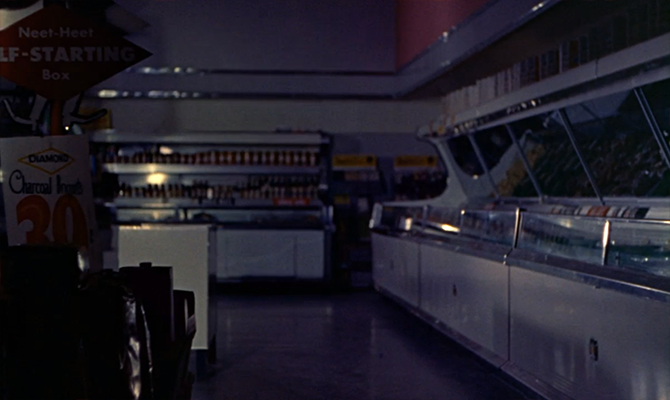
 2015:
2015: 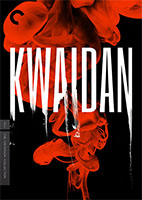
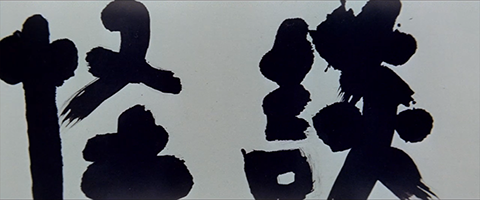
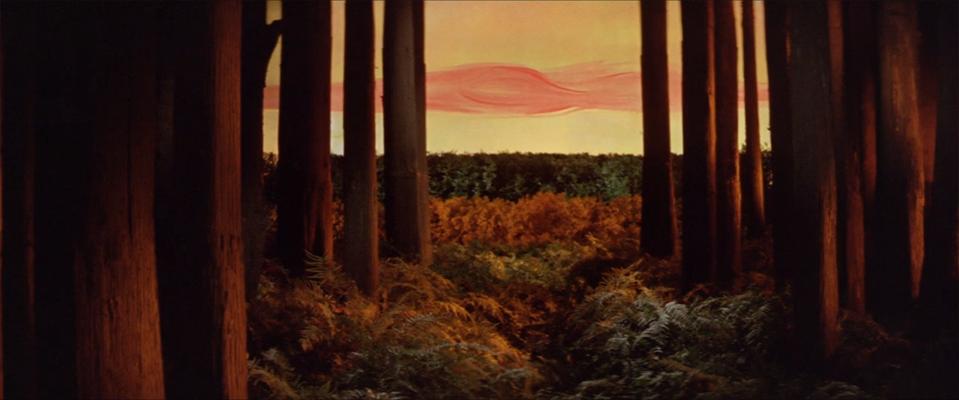

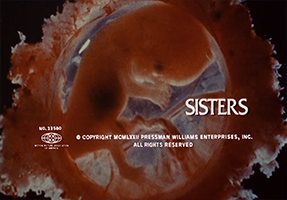
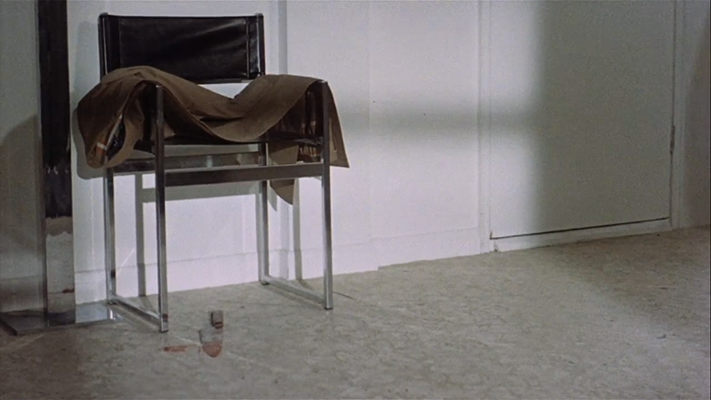
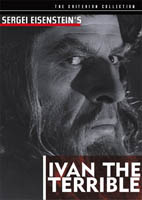
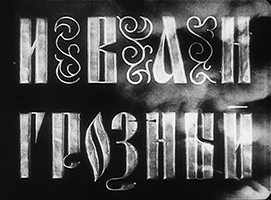
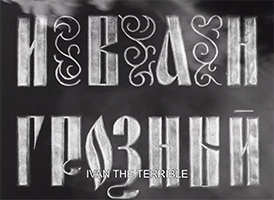
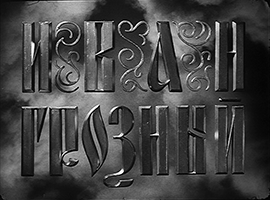
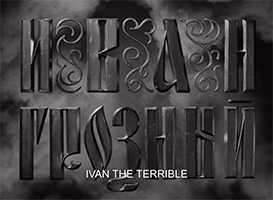
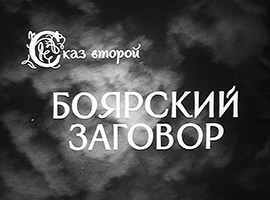
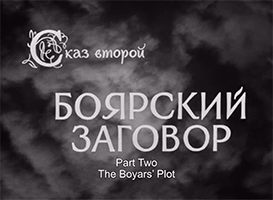
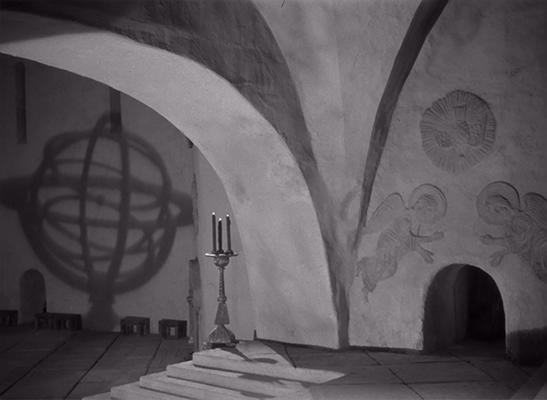
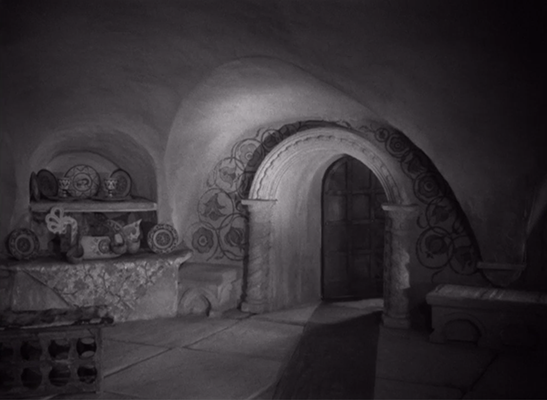
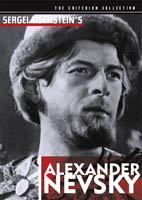
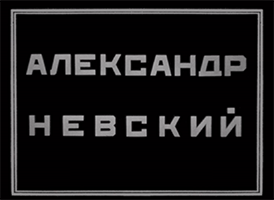



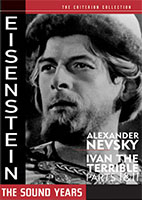
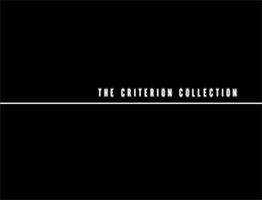
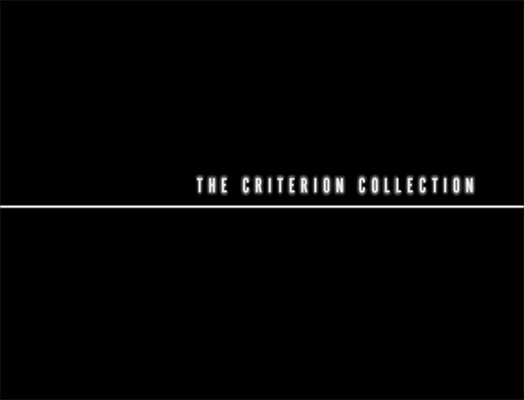
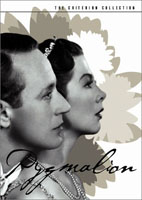 [OOP 9/2009]
[OOP 9/2009]